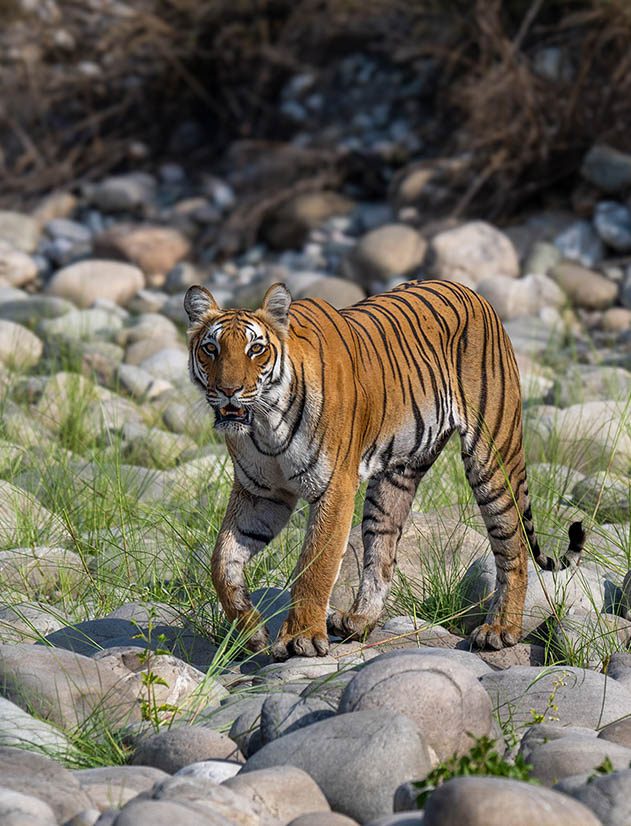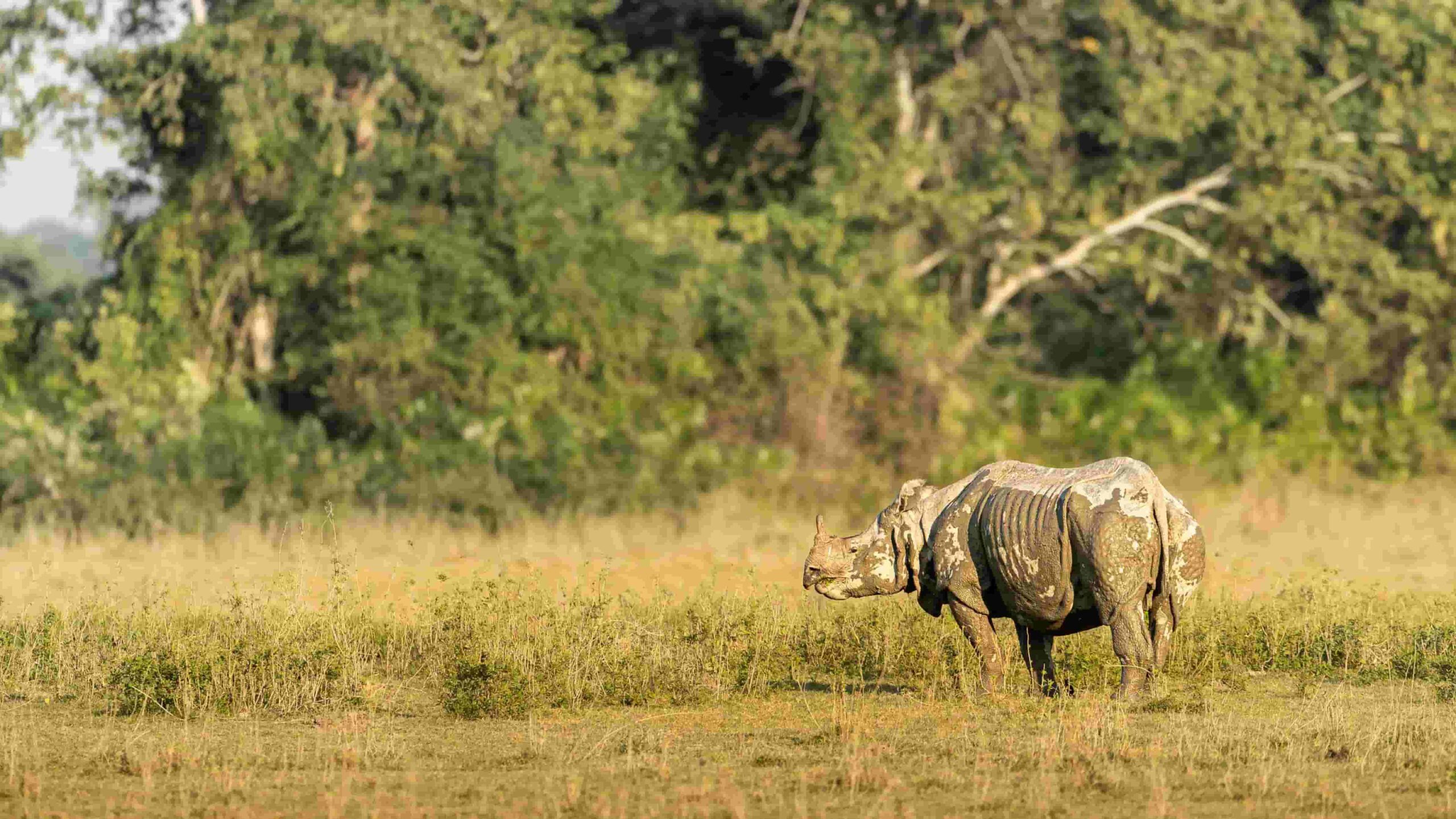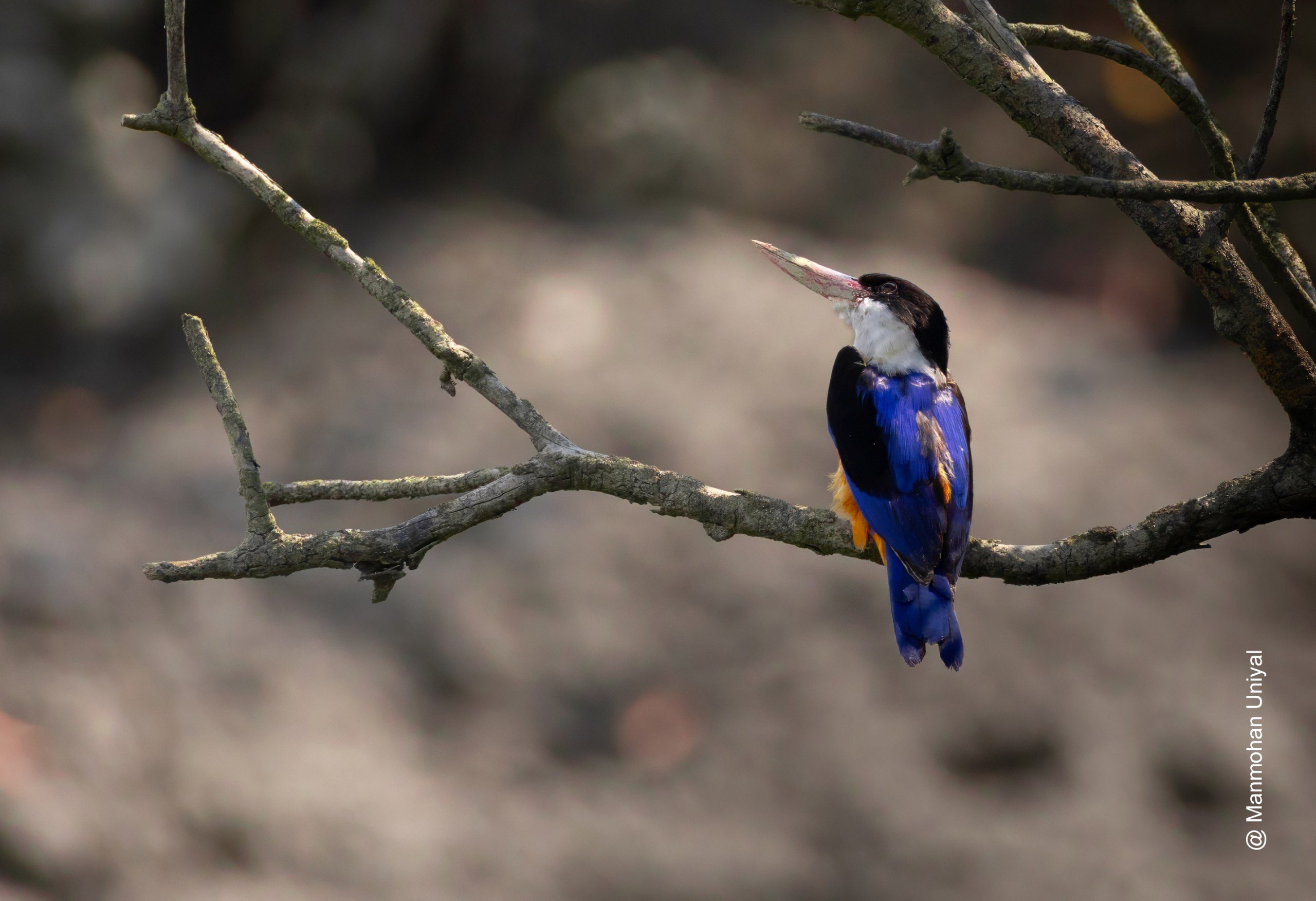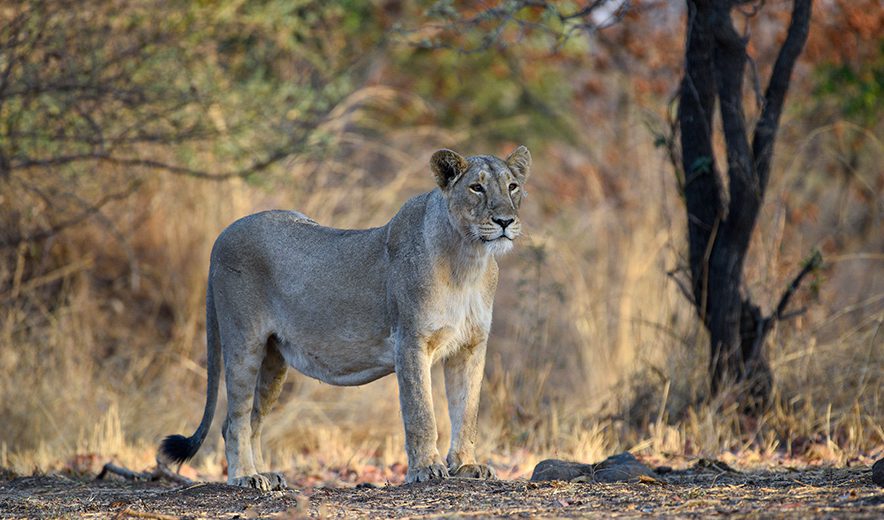Are you ready to immerse yourself in the wild beauty of India? With its diverse landscapes ranging from lush forests to arid deserts, India is a treasure trove for nature lovers and adventure seekers alike. The country is home to a remarkable array of wildlife, including majestic tigers, playful elephants, and vibrant bird species, offering countless opportunities for unforgettable encounters. Whether you’re a seasoned traveler or a curious explorer, the thrill of witnessing these magnificent creatures in their natural habitats is an experience like no other. In this guide, we’ll take you on a journey through the 10 best wildlife tours in India, each promising a unique adventure that showcases the stunning biodiversity and captivating scenery of this incredible land. Get ready to unleash your inner adventurer and discover the wonders that await in India’s wilderness! Before you decide about your travel, it’s important to know the top Wildlife tours in India.
The Importance of Wildlife Conservation
Wildlife conservation is a crucial aspect of preserving the natural heritage and biodiversity of our planet. It ensures the survival of various species, maintaining ecological balance and supporting the intricate web of life. Without conscious efforts to protect wildlife and their habitats, the delicate ecosystems that sustain life could collapse, leading to irreversible damage. Conservation not only safeguards the existence of animals but also helps in maintaining the health of our environment, which directly impacts human well-being.
In India, the significance of wildlife conservation is particularly pronounced due to the country’s rich and varied biodiversity. From the majestic Bengal tiger to the elusive snow leopard, India’s wildlife is both unique and awe-inspiring. National parks, wildlife sanctuaries, and biosphere reserves play a pivotal role in protecting these species and their habitats. By promoting sustainable tourism and encouraging responsible practices, we can contribute to the conservation efforts, ensuring that these magnificent creatures continue to thrive for generations to come.
Furthermore, wildlife conservation has economic benefits, particularly through eco-tourism. By attracting nature enthusiasts and adventure seekers from around the globe, wildlife tourism generates significant revenue that can be reinvested in conservation projects. This symbiotic relationship between tourism and conservation helps create a sustainable model where both nature and humans benefit. As we explore the best wildlife tours in India, it is important to remember the role we play in protecting these natural wonders.
Overview of India’s Diverse Ecosystems
India’s natural landscapes are as diverse as its cultural heritage, offering a myriad of ecosystems that support an incredible variety of wildlife. From the dense, tropical rainforests of the Western Ghats to the vast, arid expanses of the Thar Desert, each region presents a unique environment that is home to distinctive flora and fauna. This diversity makes India a paradise for nature enthusiasts and wildlife photographers, providing endless opportunities for exploration and discovery.
The Himalayan region in the north is characterized by its rugged terrain and snow-capped peaks, offering habitats for rare and endangered species like the snow leopard and the Himalayan blue sheep. Moving south, the fertile plains of the Gangetic basin support a wealth of birdlife, while the lush forests of central India are the stronghold of the Bengal tiger. The Western Ghats and the Eastern Ghats, with their rich biodiversity, are recognized as UNESCO World Heritage Sites, teeming with endemic species and vibrant ecosystems.
Coastal ecosystems, including the mangroves of the Sundarbans and the coral reefs of the Andaman and Nicobar Islands, further enhance India’s ecological diversity. These regions provide critical habitats for marine life, including the elusive dugong and various species of sea turtles. The combination of terrestrial and marine ecosystems makes India a hotspot for biodiversity, offering a captivating blend of wildlife experiences that are unparalleled in their richness and variety.
Top 10 Wildlife Tours in India
India’s wildlife tours offer a glimpse into the country’s extraordinary natural beauty and biodiversity. Each tour provides a unique opportunity to encounter some of the most iconic and elusive species in their natural habitats. Whether you’re tracking tigers in the dense jungles of Madhya Pradesh or watching migratory birds in the wetlands of Bharatpur, these tours promise unforgettable adventures.
- Jim Corbett National Park, Uttarakhand: Renowned for its population of Bengal tigers and diverse birdlife, Jim Corbett is India’s oldest national park and a must-visit for wildlife enthusiasts.
- Ranthambore National Park, Rajasthan: Famous for its tiger sightings, Ranthambore offers a thrilling experience amidst the remnants of ancient forts and temples.
- Kanha National Park, Madhya Pradesh: This picturesque park inspired Rudyard Kipling’s “The Jungle Book” and is home to tigers, leopards, and the rare barasingha deer.
- Kaziranga National Park, Assam: A UNESCO World Heritage Site, Kaziranga is celebrated for its population of the endangered one-horned rhinoceros.
- Sundarbans National Park, West Bengal: The largest mangrove forest in the world, Sundarbans is the domain of the elusive Royal Bengal tiger and offers unique boat safaris.
- Gir National Park, Gujarat: The last refuge of the Asiatic lion, Gir is a conservation success story and a fascinating destination for wildlife lovers.
- Bandhavgarh National Park, Madhya Pradesh: Known for its high density of tigers, Bandhavgarh offers excellent opportunities for wildlife photography and safaris.
- Periyar Wildlife Sanctuary, Kerala: Nestled in the Western Ghats, Periyar is famous for its elephant herds and scenic boat rides on Periyar Lake.
- Keoladeo National Park, Rajasthan: A birdwatcher’s paradise, Keoladeo is a UNESCO World Heritage Site that hosts thousands of migratory birds each year.
- Pench National Park, Madhya Pradesh: Another inspiration for “The Jungle Book,” Pench offers a rich tapestry of wildlife and stunning landscapes.
Detailed Review of Each Wildlife Tour
Jim Corbett National Park, Uttarakhand
Jim Corbett National Park, established in 1936, is India’s oldest national park and a pioneer in wildlife conservation. Named after the famed hunter-turned-conservationist Jim Corbett, the park spans over 520 square kilometers and is a haven for nature lovers. The park’s diverse landscapes, ranging from lush forests to grasslands and riverine belts, support a rich variety of wildlife.
The park is most famous for its Bengal tiger population, and a safari here offers a high chance of spotting these majestic predators. Besides tigers, the park is home to leopards, elephants, deer, and a plethora of bird species. Birdwatchers will be delighted by the sight of species like the crested serpent eagle, Himalayan pied kingfisher, and red junglefowl. The Ramganga River, which meanders through the park, attracts numerous aquatic birds and provides a picturesque setting for wildlife viewing.

Visitors can explore the park through jeep safaris, elephant rides, and even walking safaris in designated zones. The diverse flora, including sal forests and bamboo groves, adds to the park’s scenic beauty. Accommodations range from luxury resorts to forest lodges, ensuring a comfortable stay amidst nature. Jim Corbett National Park offers a perfect blend of adventure and tranquility, making it a must-visit destination for wildlife enthusiasts.
Ranthambore National Park, Rajasthan
Ranthambore National Park, located in the heart of Rajasthan, is one of India’s most renowned tiger reserves. The park’s rugged terrain, dotted with ancient ruins, creates a dramatic backdrop for wildlife adventures. Spread over 1,334 square kilometers, Ranthambore is a mosaic of dry deciduous forests, grasslands, and lakes, providing a rich habitat for a variety of species.
The park is particularly famous for its tiger population, and sightings are relatively frequent, making it a favorite destination for wildlife photographers. Apart from tigers, Ranthambore is home to leopards, sloth bears, sambar deer, and marsh crocodiles. The park’s lakes and waterholes attract a wide range of bird species, making it a birdwatcher’s delight. The ruins of the Ranthambore Fort, perched on a hilltop, add a historical dimension to the wildlife experience.
Jeep and canter safaris are the primary modes of exploring the park, offering visitors a chance to venture deep into the wilderness. The park is divided into several zones, each with its unique landscapes and wildlife sightings. Accommodations range from luxury resorts to budget-friendly options, catering to diverse preferences. Ranthambore National Park offers an exhilarating blend of wildlife, history, and natural beauty, making it a must-visit for nature lovers.

Kanha National Park, Madhya Pradesh
Kanha National Park, located in the central Indian state of Madhya Pradesh, is a breathtaking expanse of wilderness that inspired Rudyard Kipling’s iconic “The Jungle Book.” Spanning over 940 square kilometers, the park’s landscapes include lush sal and bamboo forests, grassy meadows, and serene water bodies. Kanha is one of India’s finest tiger reserves and a stronghold for the endangered Bengal tiger.

In addition to its tiger population, Kanha is renowned for its barasingha or swamp deer, which have been successfully conserved within the park. Other notable species include leopards, wild dogs, sloth bears, and a variety of deer. The park is also a haven for birdwatchers, with over 300 avian species recorded, including the crested hawk-eagle, racket-tailed drongo, and Indian roller. The diverse flora and fauna make every safari a unique and enriching experience.
Visitors can explore Kanha through jeep safaris, which are conducted in two shifts—morning and evening. The park’s well-managed tourism infrastructure includes comfortable accommodations ranging from luxury lodges to budget-friendly options. The Kanha Museum, located near the Kisli gate, provides valuable insights into the park’s history and conservation efforts. Kanha National Park offers an immersive wildlife experience, combining natural beauty with a rich tapestry of biodiversity.
Kaziranga National Park, Assam
Kaziranga National Park, located in the northeastern state of Assam, is a UNESCO World Heritage Site renowned for its population of the endangered one-horned rhinoceros. Spanning over 430 square kilometers, the park encompasses grasslands, wetlands, and dense forests, creating a diverse habitat for a wide range of species. Kaziranga is a conservation success story, with its rhino population steadily increasing over the years.
In addition to the iconic one-horned rhino, Kaziranga is home to other megafauna such as elephants, Bengal tigers, and wild water buffaloes. The park also boasts a rich birdlife, with over 500 species recorded, including the great Indian hornbill, Bengal florican, and various migratory birds. The Brahmaputra River, which flows through the park, enhances the scenic beauty and supports the lush vegetation.
Visitors can explore Kaziranga through jeep safaris and elephant rides, offering close-up views of the wildlife. The park is divided into four zones, each with its unique landscapes and species diversity. Accommodations range from eco-friendly lodges to luxury resorts, ensuring a comfortable stay amidst nature. Kaziranga National Park offers an unparalleled wildlife experience, combining conservation success with breathtaking natural beauty.

Sundarbans National Park, West Bengal
The Sundarbans National Park, part of the largest mangrove forest in the world, is a unique and enchanting destination for wildlife enthusiasts. Located in the delta region of West Bengal, the park spans over 2,585 square kilometers and is a UNESCO World Heritage Site. The Sundarbans is renowned for its elusive Royal Bengal tigers, which have adapted to the challenging mangrove habitat.
The park’s intricate network of tidal waterways, mudflats, and small islands creates a diverse ecosystem that supports a variety of species. In addition to tigers, the Sundarbans is home to saltwater crocodiles, spotted deer, wild boars, and an array of bird species. The unique landscape offers a different kind of wildlife experience, with boat safaris being the primary mode of exploration. Navigating through the mangrove channels provides a thrilling and immersive adventure.

The Sundarbans also play a critical role in protecting the inland areas from cyclones and tidal surges, highlighting the importance of conserving this unique ecosystem. Visitors can stay in eco-friendly lodges and resorts located on the fringes of the park, offering a blend of comfort and rustic charm. The Sundarbans National Park offers a mystical and captivating wildlife experience, combining the thrill of spotting tigers with the serene beauty of the mangrove forests.
Gir National Park, Gujarat
Gir National Park, located in the western state of Gujarat, is the last remaining stronghold of the Asiatic lion. Spanning over 1,412 square kilometers, the park’s diverse landscapes include dry deciduous forests, grasslands, and rocky hills. Gir is a conservation success story, with the lion population steadily increasing due to dedicated efforts by forest officials and local communities.
In addition to the majestic Asiatic lions, Gir is home to leopards, sloth bears, striped hyenas, and a variety of deer species. The park also boasts a rich birdlife, with over 300 species recorded, including the crested serpent eagle, painted sandgrouse, and Indian pitta. The Gir Interpretation Zone, located at Devalia, offers a convenient way to observe wildlife in a controlled environment, providing valuable insights into the park’s biodiversity.
Visitors can explore Gir through jeep safaris, which are conducted in designated zones to minimize disturbance to the wildlife. The park’s well-managed tourism infrastructure includes comfortable accommodations ranging from luxury resorts to budget-friendly options. Gir National Park offers a unique wildlife experience, combining the thrill of encountering lions with the scenic beauty of Gujarat’s rugged landscapes.

Bandhavgarh National Park, Madhya Pradesh
Bandhavgarh National Park, located in the central Indian state of Madhya Pradesh, is renowned for its high density of Bengal tigers. Spanning over 1,536 square kilometers, the park’s diverse landscapes include dense forests, grasslands, and rocky hills. Bandhavgarh offers excellent opportunities for wildlife photography and safaris, making it a favorite destination for nature enthusiasts.
In addition to tigers, Bandhavgarh is home to leopards, sloth bears, wild boars, and various species of deer. The park also boasts a rich birdlife, with over 250 species recorded, including the crested serpent eagle, golden oriole, and Indian pitta. The ancient Bandhavgarh Fort, perched on a hilltop, adds a historical dimension to the wildlife experience, offering panoramic views of the surrounding landscapes.
Visitors can explore Bandhavgarh through jeep safaris, which are conducted in two shifts—morning and evening. The park’s well-managed tourism infrastructure includes comfortable accommodations ranging from luxury lodges to budget-friendly options. Bandhavgarh National Park offers an exhilarating wildlife experience, combining natural beauty with a rich tapestry of biodiversity.
Periyar Wildlife Sanctuary, Kerala
Periyar Wildlife Sanctuary, located in the southern state of Kerala, is a picturesque expanse of wilderness nestled in the Western Ghats. Spanning over 925 square kilometers, the sanctuary’s diverse landscapes include evergreen forests, grasslands, and the serene Periyar Lake. Periyar is renowned for its elephant herds and offers a tranquil setting for wildlife adventures.
In addition to elephants, Periyar is home to tigers, leopards, wild boars, and various species of deer. The sanctuary also boasts a rich birdlife, with over 300 species recorded, including the Malabar grey hornbill, Nilgiri wood pigeon, and great Indian hornbill. The Periyar Lake, created by the Mullaperiyar Dam, attracts a variety of aquatic birds and offers scenic boat rides for wildlife viewing.
Visitors can explore Periyar through jeep safaris, boat rides, and guided treks. The sanctuary’s well-managed tourism infrastructure includes eco-friendly lodges and resorts, offering a blend of comfort and rustic charm. Periyar Wildlife Sanctuary offers a serene and immersive wildlife experience, combining the beauty of Kerala’s landscapes with the thrill of encountering wildlife.
Keoladeo National Park, Rajasthan
Keoladeo National Park, located in the northwestern state of Rajasthan, is a UNESCO World Heritage Site renowned for its rich birdlife. Spanning over 29 square kilometers, the park’s diverse habitats include wetlands, grasslands, and woodlands. Keoladeo is a birdwatcher’s paradise, attracting thousands of migratory birds each year.
In addition to its avian population, Keoladeo is home to various mammals, including deer, wild boars, and jackals. The park’s wetlands provide a critical habitat for waterfowl and other aquatic species, making it a vital stopover for migratory birds. Notable species include the Siberian crane, painted stork, and black-necked stork, offering a spectacular birdwatching experience.
Visitors can explore Keoladeo through guided walks, bicycle rides, and rickshaw rides, offering a close-up view of the park’s diverse birdlife. The park’s well-managed tourism infrastructure includes comfortable accommodations ranging from luxury lodges to budget-friendly options. Keoladeo National Park offers a captivating wildlife experience, combining the beauty of Rajasthan’s landscapes with the thrill of birdwatching.

Pench National Park, Madhya Pradesh
Pench National Park, located in the central Indian state of Madhya Pradesh, is a picturesque expanse of wilderness that inspired Rudyard Kipling’s “The Jungle Book.” Spanning over 758 square kilometers, the park’s diverse landscapes include lush forests, grasslands, and riverine belts. Pench is renowned for its rich biodiversity and offers a captivating wildlife experience.
In addition to its tiger population, Pench is home to leopards, wild dogs, sloth bears, and a variety of deer species. The park also boasts a rich birdlife, with over 250 species recorded, including the crested serpent eagle, racket-tailed drongo, and Indian roller. The Pench River, which flows through the park, enhances the scenic beauty and supports the lush vegetation.
Visitors can explore Pench through jeep safaris, which are conducted in two shifts—morning and evening. The park’s well-managed tourism infrastructure includes comfortable accommodations ranging from luxury lodges to budget-friendly options. Pench National Park offers an immersive wildlife experience, combining natural beauty with a rich tapestry of biodiversity.
Best Time to Experience Wildlife Tours in India
The best time to experience wildlife tours in India largely depends on the region and the park’s climatic conditions. However, in most parts of the country, the dry season—between October and June—is considered ideal for wildlife safaris. During this time, animals frequent water bodies, increasing your chances of spotting them in the wild.
In northern and central India—including Jim Corbett, Ranthambore, Kanha, Bandhavgarh, and Pench—the months from October to June offer excellent visibility and favorable conditions for safaris. Summer months (April to June), although hot, are particularly rewarding for tiger sightings, as animals are drawn to the remaining water sources.
In southern India, especially in Periyar and other Western Ghats reserves, November to April is the most pleasant season, with minimal rainfall and comfortable temperatures. These months are perfect for both wildlife viewing and nature walks in the lush evergreen forests.
In the northeast, parks like Kaziranga and the Sundarbans are best visited between November and April, when the weather is dry and the parks are fully open to visitors. Monsoons often lead to temporary closures due to flooding or poor road access, so planning your trip around the dry season is key.
For birdwatchers, December to February is the prime window. During this time, thousands of migratory birds from Central Asia and Europe arrive in India, transforming wetlands like Keoladeo and Chilika into vibrant birding paradises.
Final Thoughts
India’s wildlife tours are more than just thrilling safaris—they are windows into the soul of nature, offering unforgettable encounters and moments of awe. Each destination tells a different story of ecology, culture, and conservation. Whether you’re chasing the roar of a tiger in Bandhavgarh, photographing hornbills in Periyar, or cruising through Sundarbans’ mystic waterways, every experience is unique and enriching.
By choosing to explore these destinations responsibly, you also become a part of a larger movement—one that respects wildlife, supports local communities, and champions conservation.
So, pack your bags, charge your camera, and embark on a journey that promises not just adventure but inspiration. The wild heart of India is calling!
India’s wildlife tours are more than just thrilling safaris—they are windows into the soul of nature, offering unforgettable encounters and moments of awe. Each destination tells a unique story of biodiversity, conservation, and adventure. Whether you’re chasing the roar of a tiger in Bandhavgarh, photographing hornbills in Periyar, or cruising through the Sundarbans’ mangrove waterways, every experience enriches your connection with nature.
By choosing to explore these national parks and wildlife sanctuaries in India responsibly, you also become a part of a larger movement—one that respects wildlife, empowers local communities, and champions conservation.
Ready to experience the thrill of the wild?
Explore our specially curated Big Cats in India itineraries or join an expert-led bird photography tour in India to witness the best of India’s wilderness.

